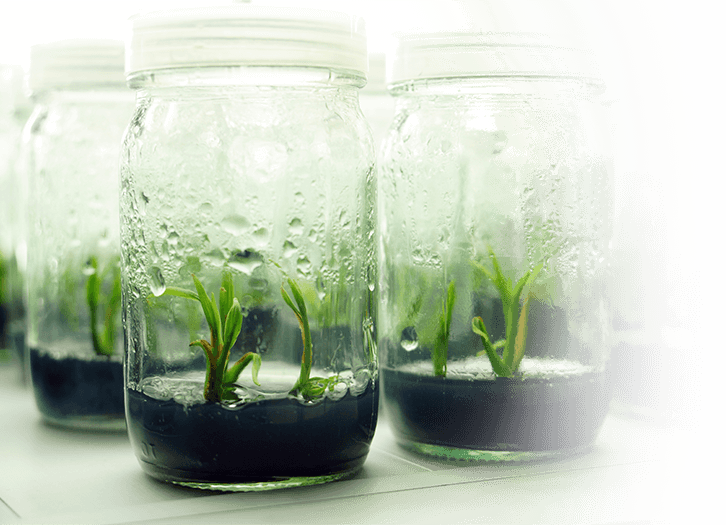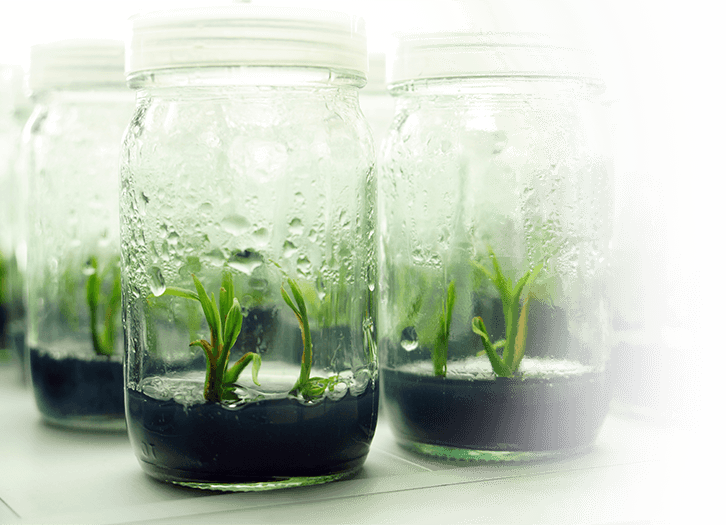

TC Laboratory Service
The Golgi Tec Tissue Culture laboratory maintains a hygienic environment throughout the laboratory production floor to ensure the setup is perfect for tissue culture and plant multiplication. The area is maintained with a positive pressure of clean air fed through the centralized air purification system and has controlled light, temperature and humidity suitable for tissue culture.
Constructed following green building concepts, the laboratory walls are made with foam and AAC blocks to minimize the building’s thermal conductivity. We also recycle and reuse our wastewater ensuring resource sustainability. About 50% of our building roof is shaded with solar panels and the rest are sheltered with transparent roofing sheets giving sufficient sunlight for a collection of mother plants. The TC laboratory is fully equipped with the latest facility to produce healthy, disease-free and high yielding plants!
Micro Propagation
Initiation

Multiplication

Shooting & Rooting

Hardening

Mother Plant
A mother plant is grown specifically for cloning and tissue culture purposes. Plants identified as mother plants are kept in a constant vegetative state and are used for taking tender leaves or shoots for tissue culture process to grow more quantity of the same plant.
The development of plantlets can be divided into four major steps or stages. During the initiation stage, which is the first step in any successful tissue culture program is to select a suitable explant source. Almost any plant tissue or organ can be used as an explant, but the degree of success depends upon the culture system used, the species being cultured and the removal of surface contaminants from the explant.
The objective of the multiplication stage is to get clean cultures that can increase the number of shoots produced by the original explant. By sub culturing these new shoots on to new medium, the number of shoots produced in culture increases dramatically. In this stage, repeated sub-culturing is done to encourage more propagation, which also depends on a combination of growth regulators.
During the shooting and rooting stage, the selected plants are forced for root formation which is achieved by media modification and modifying the concentration of growth regulators. The concentration of various components and sugar is reduced and the concentration of auxins and light intensity in the laboratory is increased to start photosynthesis and other physiological activities.
By the hardening stage, the plantlets will be well rooted and will be adapted to the greenhouse environment. At this stage, the plantlets are transplanted into a soil mixture in small pots. Initially, the micro-plants will be protected from dehydration in a shaded, high humidity propagator till new functional roots to form. After the plantlet shows promising growth and steady development, it can be taken placed in another environment.
Inquiry Now
Get in touch with us today and we will get back soon with more details.